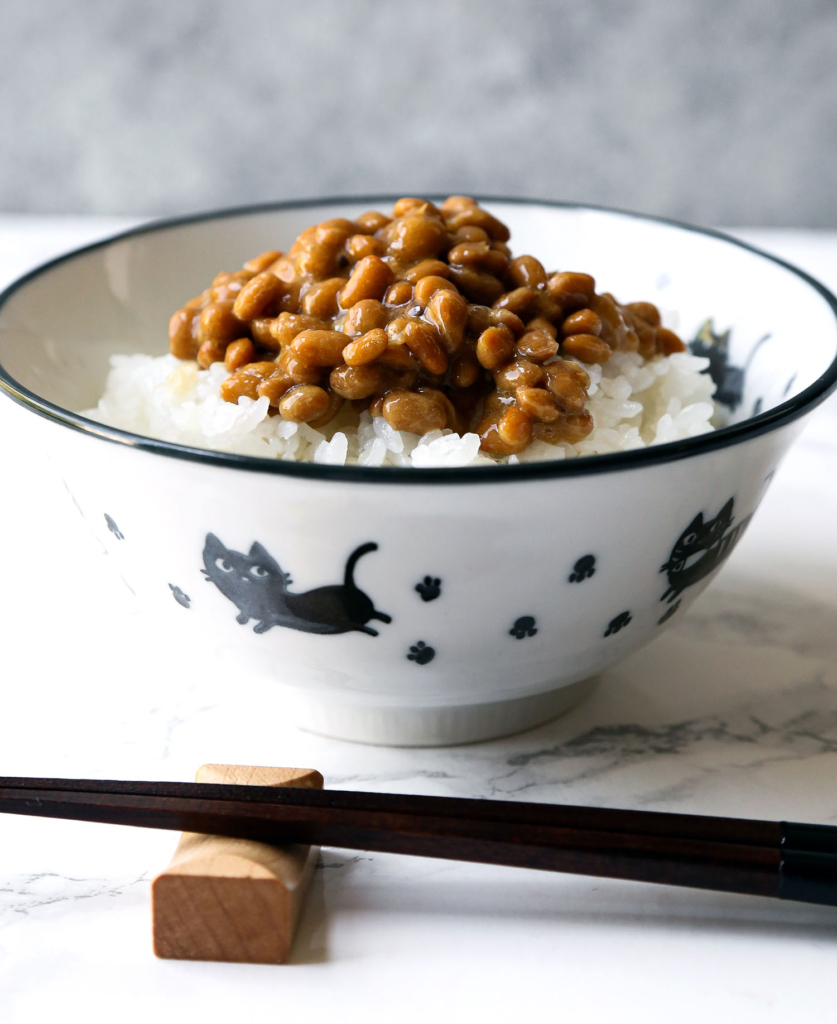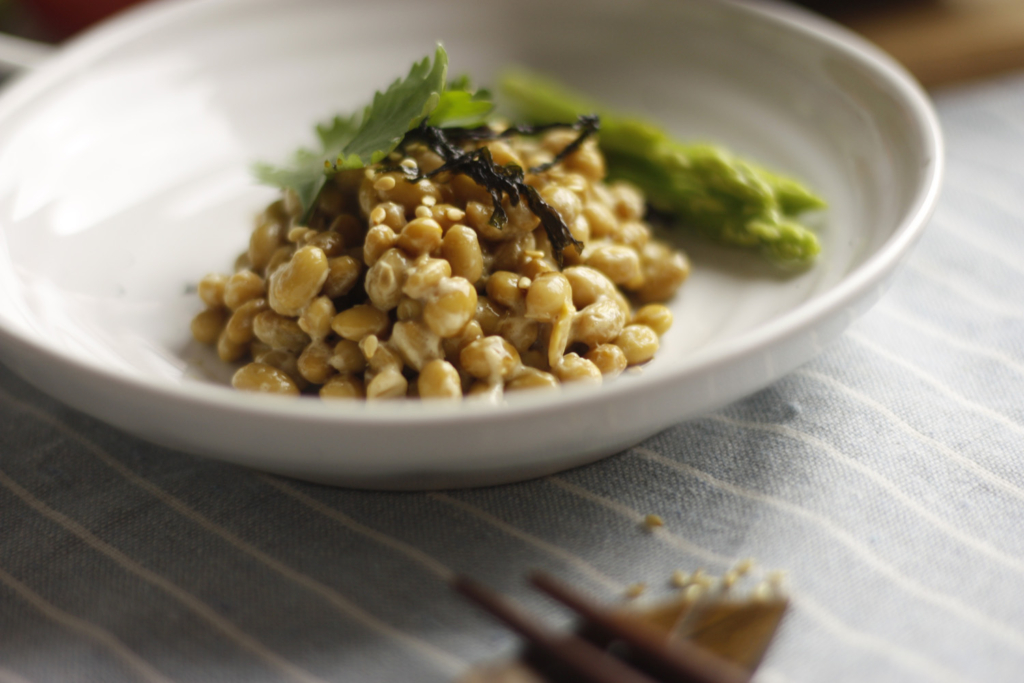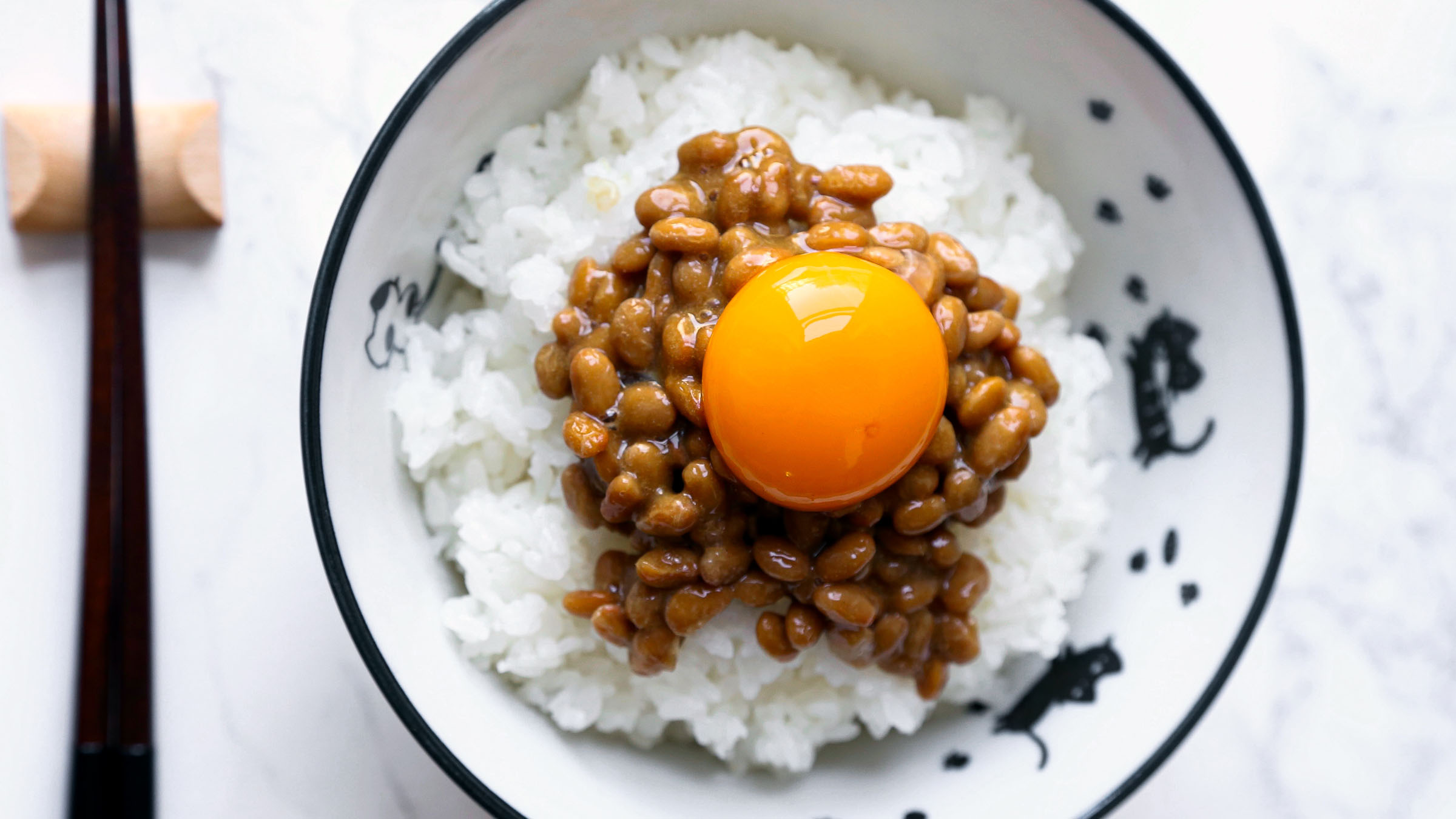“We can all remember the first time we tried natto.”
Caroline Phelps, Japanese-Canadian food blogger behind Pickled Plum, is right.
The first time I tried natto was in a seaside hotel in Kochi prefecture on Shikoku, the second smallest of Japan’s main islands. I went down to the breakfast buffet and, among all the different dishes, my eyes fell on a small fridge with little square single-serving packages in it. I had no idea what they contained, and there was no sign whatsoever – making the entire matter even more mysterious. Why separate the boxes from the rest of the food? And why were they completely unlabelled?
As soon as I opened the fridge, a pungent smell pervaded the air – sharp enough to justify the separate fridge. Back at the table, the small package revealed a mass of what looked like baked beans. My hesitance grew when I tried to grab some of it with my chopsticks, and felt the resistance and the stickiness of its stringy slime. Yet I had to taste it.
“The first few bites were a little shocking to my palate, the taste truly indescribable. It was like eating parmesan cheese with canned beans mixed with an old sock and a little garbage on top.`` – Caroline Phelps

Surprisingly, I didn’t feel the slime at all. The mystery food had a strong, umami flavour, and I immediately understood the appeal – and took a second bite. To me, it tasted rich and interesting, a lot like gorgonzola.
From that moment, I was hooked on what I would later learn to be natto, a dish of fermented soybeans – and the object of love, hate and many legends.
The Breakfast Of Samurai
Like many beloved foods with long-ago beginnings, the origins of natto are quite obscure.
“Some historians say that it came from China during the Chinese Zhou Dynasty (1046-256 BCE), while others say it was accidentally discovered in northeastern Japan by samurai warrior Minamoto Yoshiie around 1051, when cooked soybeans that were kept in a rice-straw sack and carried by a horse ended up fermenting from the warmth of the horse’s back,” Phelps recounts. “The only thing everyone seems to agree on is that it’s been part of the Japanese culture for hundreds of years!”
The latter theory of its origins is where natto derives its fame as a food of the samurai, and there might be something to the legend from a scientific perspective, too.
Natto is a fermented food, made with the bacterium Bacillus subtilis (naturally present on rice straw), a probiotic and essential component of our intestinal microflora – making it a healthy inclusion in any diet. It also boasts 18 grammes of protein per 100 grammes of product, as well as high levels of vitamin K2, which promotes bone density. Recent studies even claim its nattokinase enzyme to be a promising agent for the prevention of cardiovascular diseases.

No wonder, then, that natto is eaten on a daily basis in health-conscious Japan. “Natto is considered a breakfast food and is always served with a bowl of white rice and pickles on the side. It’s known to be extremely nutritious and filling, and is enjoyed by millions of Japanese on a daily basis,” says Phelps, a self-confessed fan of the fermented food.
“For a long time it was considered a breakfast food for the older generation,” she adds, “but it’s been making a comeback in the recent years, with specialised natto restaurants popping up all over the country and serving different types of natto and toppings.”
How To Eat It
If you’ve been curious to try natto, we recommend you do. Even if you need to close your eyes for the very first bite, chances are you might simply fall in love with it.
While it is possible to make natto at home, you can easily find it frozen in the typical square styrofoam containers in any Asian grocery store. Each serving usually contains two tiny bags of sauces: hot mustard and tsuyu sauce, a savoury, concentrated stock based on bonito flakes.
“The traditional way to eat natto is to mix it with these ingredients and pour it over rice,” says Phelps. Another Japanese custom is to stir it vigorously, as some say this increases the umami flavour. You can also add a few drops of soy sauce.
“I personally love to add an egg yolk for creaminess and to tone down its intense flavour,” says Phelps. “I also love to eat natto over rice with a drizzle of soy sauce and topped with chopped avocado, bonito flakes and scallions. Adding ground black pepper to it is also surprisingly delicious!”
Check out the recipe on her blog, here.
A Japanese Take On Natto
Despite its staple status in Japanese food culture, not all Japanese people love natto, which says a lot about the polarising nature of this food. But whether they end up loving it or hating it, everyone remembers the first time they tried it – Phelps included.
“When I lived in Tokyo, one of my favourite things to do on the weekend was to have breakfast in family restaurants,” she recalls. “Natto was offered on the menu as part of the traditional Japanese breakfast set, so one day, I decided to give it a try. I had heard of it before but had never tried it, since my mother – and pretty much my entire Japanese family – cannot stand the smell nor the taste.
“The first few bites were a little shocking to my palate, the taste truly indescribable. It was like eating parmesan cheese with canned beans mixed with an old sock and a little garbage on top. But here’s the funny thing: I couldn’t stop eating it! I became obsessed with the taste of natto and craved it daily. When I left Japan, it was one of the foods I dearly missed.
“Natto is one of those foods you either love or hate, and I absolutely fell in love with it.”














Sorry, the comment form is closed at this time.